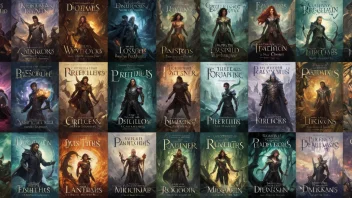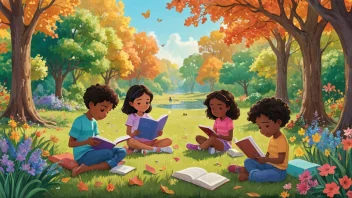Young Adult (YA) literature has become a phenomenon in contemporary storytelling, resonating with a diverse audience that transcends age. While the themes often revolve around identity, love, and self-discovery, one crucial element that significantly influences the reader's experience is pacing. Pacing dictates how quickly or slowly a story unfolds, affecting the tension, emotional engagement, and overall impact of the narrative. In YA storytelling, where readers are often navigating their own tumultuous paths from adolescence to adulthood, mastering pacing can make the difference between a forgettable read and a transformative experience. Understanding and applying the principles of pacing effectively allows authors to capture the essence of youth, drawing readers into a world that reflects their own struggles and triumphs.
Understanding Pacing in Literature
Pacing in literature refers to the speed at which a story progresses. It encompasses the rhythm of the narrative, the duration of scenes, and the balance between action and exposition. In YA literature, pacing is particularly important due to the emotional and psychological journey that characters undergo. A well-paced story not only maintains the reader's interest but also mirrors the often chaotic and unpredictable nature of adolescent life.
Types of Pacing
There are generally two types of pacing: slow pacing and fast pacing. Each serves a unique purpose and can be employed strategically to enhance storytelling.
- Slow Pacing: This involves detailed descriptions, introspective moments, and character development. It allows readers to connect deeply with the characters and their emotions. In YA literature, slow pacing can be effective in exploring themes like mental health, family dynamics, and personal growth.
- Fast Pacing: This is characterized by quick scene changes, rapid dialogue, and action-driven plots. Fast pacing is often utilized in thrillers or adventure stories, creating a sense of urgency that keeps readers on the edge of their seats. In YA, fast pacing can reflect the impulsive nature of youth and the urgency of first love or friendship conflicts.
The Role of Pacing in Character Development
Character development is central to YA literature, as readers often seek relatable protagonists who navigate the complexities of growing up. Pacing plays a vital role in how characters evolve throughout the narrative. When pacing is slow, it allows for deeper exploration of a character's thoughts and feelings, providing context for their actions. For instance, a character dealing with issues such as bullying or anxiety can be fleshed out through slower scenes that delve into their internal struggles.
On the other hand, employing fast pacing can create a sense of urgency that mirrors a character's emotional state. A young adult experiencing a heartbreak might have their story unfold rapidly, reflecting the overwhelming nature of their feelings. The juxtaposition of slow and fast pacing can be a powerful tool for authors, emphasizing key moments of change or realization.
Pacing and Plot Dynamics
The pacing of a story also heavily influences its plot dynamics. A well-paced plot keeps readers engaged, providing just the right amount of tension and resolution. In YA narratives, where plot twists are common, pacing can either enhance or diminish their impact.
For instance, introducing a plot twist after a series of slower-paced scenes can create a shocking effect, drawing readers in as they reassess earlier events with new insight. Conversely, if a story moves too quickly, readers may feel lost, unable to grasp the significance of these twists. Authors must strike a balance, ensuring that the pacing allows the plot to unfold in a way that feels natural and satisfying.
Pacing and Emotional Engagement
The emotional engagement of readers is crucial in YA literature. Pacing significantly influences how readers connect with the narrative. When the pacing aligns with the emotional arcs of characters, readers are more likely to be invested in their journeys.
Consider a story where a character faces a significant loss. If the pacing slows down during this moment, readers are given the space to process the emotional weight of the event, fostering empathy and connection. Conversely, if the story rushes through such critical moments, readers may feel detached, unable to fully grasp the gravity of the situation.
Techniques to Control Pacing
Authors can employ various techniques to control pacing effectively:
- Sentence Length: Short, punchy sentences can accelerate the pace, while longer, more complex sentences can slow it down.
- Scene Length: Quick scene transitions can create a fast pace, while lingering on a scene allows for deeper exploration.
- Dialogue: Rapid-fire dialogue can heighten tension, while extended monologues can slow the action for introspection.
- Cliffhangers: Ending chapters with cliffhangers can maintain a fast pace, compelling readers to keep turning pages.
Examples of Effective Pacing in YA Literature
Several YA novels exemplify the effective use of pacing to enhance storytelling:
- The Fault in Our Stars by John Green: Green expertly balances slow moments of character reflection with fast-paced interactions, creating an emotional rollercoaster that resonates deeply with readers.
- One of Us Is Lying by Karen M. McManus: This thriller employs fast pacing to maintain suspense, with quick chapter changes and cliffhangers that keep readers guessing until the end.
- Fangirl by Rainbow Rowell: Rowell's use of slower pacing allows for rich character development, enabling readers to connect with Cath's journey through college and her struggles with anxiety.
Conclusion
Pacing is an essential element of storytelling, particularly in the realm of Young Adult literature. It influences character development, plot dynamics, and emotional engagement, ultimately shaping the reader's experience. By understanding and mastering pacing, authors can create narratives that resonate with young readers, capturing the essence of their experiences. As the landscape of YA literature continues to evolve, the importance of pacing will remain a vital consideration for writers striving to connect with their audience.






